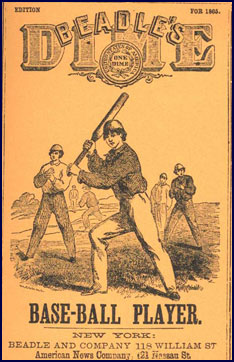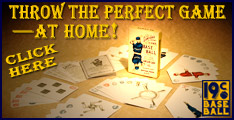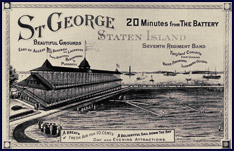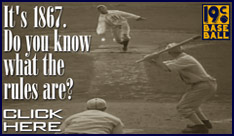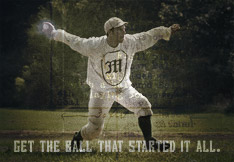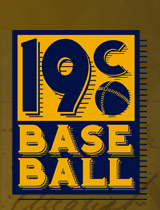Evolution of 19th Century Baseball Rules (Continued)
1884
The Union Association is formed and plays its only professional season.
National League - The pitcher is allowed to deliver the ball to the batter in any manner.
American Association - The pitcher must deliver the ball to home plate with his hand passing below his shoulder.
1885
American Association - All pitching restrictions were removed on June 7th.
1887
The National league and the American Association agree to follow the same set of playing rules. A strike was defined as a fair ball that was between the batter's knees and shoulders. The batsman was awarded first base after being hit by a pitched ball only if he attempted to avoid the ball. Bats were allowed to have one flat side.
1889
Any fair batted ball that was hit over a fence less than 210 feet from home plate entitled the Batsman to two bases.
1890
The Players' National League of Base Ball Clubs is formed and plays its only season. It becomes the first league to institute what is now known as “the infield fly rule.” The rule stated that if a Base Runner was on first base and there were less than two outs and the Batsman made a fair hit so that the ball would fall within the infield and the ball touches any fielder whether held by him or not before it touches the ground, the Batsman was out.
1892
National League and American Association of Base Ball Clubs - Bats were no longer allowed a flat side and had to be round.
Any fair batted ball that was hit over a fence less than 235 feet from home plate entitled the Batsman to two bases.
1894
National League and American Association of Base Ball Clubs - The NLAABBC's first attempt at the modern day infield fly rule is instituted. It stated that the batter is out if a fly ball is hit that can be handled by an infielder with first base occupied with only one out.
A foul hit, other than a foul tip, as the result of a bunt attempt is a strike.
The batter is out if, with two strikes, a bunt attempt results in a foul hit.
1895
National League and American Association of Base Ball Clubs - The infield fly rule is modified. It now states that the batter is out if a fly ball is hit that can be handled by an infielder with first and second bases occupied, or first, second and third bases occupied with only one out.
A ball tipped, or a foul tip, by the Batsman which rises above his head that is caught by the catcher within the catcher's 10-foot lines, is a strike.
1899
National League and American Association of Base Ball Clubs: If the catcher interferes with the Batsman and prevents him from hitting the ball the Batsman is awarded first base.
The Rules: History of the Hit Batsman ![]()
The Rules of the Game: A Compilation of the Rules of Baseball 1845–1900 ![]()
